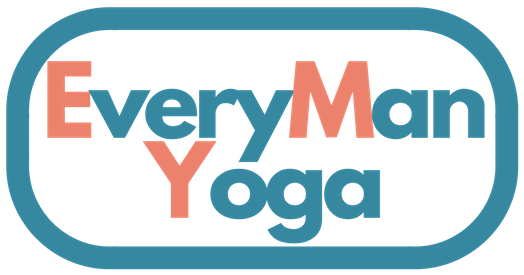Let’s talk about some Sanskrit & breathing for a sec.
As mentioned before, meditation and learning how to breathe again should be the one element of your practice that is accessible for every single person, regardless of their physical capabilities.
Our modern brains are wired to rebel against sitting still in more or less every possible way. We are regularly bombarded by outside sources encouraging us to multitask, get things done and rest as little as possible. I would argue– considering the staggering statistics about disease and psychological problems in modern America, this is simply not working.
Being that I’ve developed this blog to make yoga Sanskrit and other jargon a little more digestible for the average person, let’s dive into what all of this means from a yogic perspective. To do so, we need to unpack a couple of things that relate to meditation. Number one on that list is to develop an understanding of your breath…and what the hell some of that Sanskrit means. Let’s start there.
An Introduction to Yoga Breathing Terminology:
It goes without saying that breathing and movement are intertwined. As anyone who has ever done any manner of ‘all out’ exertion can attest, you have to breathe a lot to make movement happen. Yoga is by no means a maximal exertion modality of exercise–for most people anyway.
Dating back to the oldest yogic texts, experts explicitly point out the deep interconnection between movement and breath. Let’s look at a couple of terms that you may encounter whilst haplessly stumbling through your first yoga class:
Ujjayi:–or Ujjayi Pranayama–or victorious breath–refers to the classically prescribed method of yoga breathing. When using Ujjayi breath, the glottis–that little flap that closes your nasal valve when you swallow–is partially contracted. This creates a slight hissing sound in the back of your throat. The purpose of Ujjayi is to elongate each breath to its limit, and likewise to get the most benefit out of each breath as it applies to your physical practice. This serves as a method of directing concentration to your breathing instead of falling over or trying to act cool after falling over.
Bandha: This concept refers to a series of ‘locks’ within the body. These serve several functions but for all intents and purposes we’ll relate this term to its similar English corollary: “bonding.” These are typically used extensively in an Ashtanga setting (we’ll get into Ashtanga and what that means in later posts).
Bandhas are used fairly extensively in many yoga methodologies as well, but you’ll hear Ashtanga teachers ranting about them a lot more. The two we will address as they pertain to simple breathing are the Mula and Uddiyana Bandha. In yoga-speak, the bandhas provide a sealed bond which helps channel energy currents in the breath and body. From a more conventional standpoint, it creates a solid foundation for safe movement without endangering your spine, posture, dignity, etc.
Mula Bandha: often referred to as “root lock” or “root chakra”, this Bandha refers to engagement of the pelvic floor. There is a special variety of mysticism that enshrouds this concept, but to put it simply, Mula Bandha engagement means flexing the musculature in your perineum, or the fleshy space between your anus and genitals. Many yoga teachers like to make this more convoluted than necessary by miring it in jargon. Try this:
Either seated or standing:
1. Flex the muscles you use to stop going pee, then relax
2. Now try flexing the muscles of your anal sphincter, then relax
Mula Bandha is right in between those two muscle groups. It may require a little bit of practice, but you can essentially consider it the equal coordination of both of these muscles simultaneously at about a fifty to seventy percent of maximal contraction. An Ashtanga instructor will challenge you to maintain this through the majority of your practice. Good luck at first, because it’s a lot more work than you think.
Uddiyana Bandha: this one is a little easier to access. The Transverse Abdominus (TA) is the deep network of core musculature that serves as girdle to the midsection. Engagement of this Bandha involves contraction of the TA, specifically the portion below your belly button. To engage these muscles, try this out:
1. Tie a length of string loosely around your torso at the level of your belly button.
2. Either stand up or sit tall in a chair with your feet flat on the floor
3. Now try to draw your belly button away from the string.
Both of these Bandhas equate to a far simpler concept: core engagement. This method of contraction creates a stable core that is beneficial for everything from spinal stability while picking up your kid, to controlling your body in the middle of an all-out sprint. It’s also beneficial in keeping you out of ‘two-pump chump’ territory in the sack. And ladies: Mula Bandha can be directly linked to the almighty Kegel exercises.
Oh yeah–they also help you breathe properly and have non-shitty posture.
Prana: as mentioned above in the Ujjayi description, Pranayama refers to the movement of energy (prana) through the body. This falls a little more deeply into woo-woo territory, but understanding prana can be simpler than rambling about energy channels.
Try this:
1. Stand up as tall and straight as you can, on your yoga mat if possible
2. Grip the mat with your toes and imagine you are trying to to tear your mat apart between your feet
3. Simultaneously engage your quads and your glutes–that means straightening your legs as much as possible and imagine trying to crack a nut between your butt cheeks.
4. Now engage both your Mula and Uddiyana Bandhas–you should feel rooted and engaged from your belly button down to the soles of your feet
5. Keep the full lower body engagement and stand up as tall as you can. Imagine pressing the floor away while reaching the crown of your head to the ceiling.
6. Finally reach your arms as long at your sides as you can and spread your fingers with your palms facing forward.
7. Take five really deep breaths while trying to maintain full engagement in all parts of your body.
This is known as mountain pose in yoga, but you’ll also notice that you’re embodying the typical anatomical model you’d see in a high school biology class. Or maybe you’re just standing up really intensely…I’ll leave that for you to determine. You’ll also notice that it distinctly feels like you actually are ‘channeling’ energy into all parts of your standing body. In my opinion, this is a perfect illustration of prana energy without getting too weird about it.
Drishti: This is arguably the most important element when attempting to not look like a chump in a packed yoga class. Let’s face it: there are a lot of beautiful women who do yoga. Drishti is a method of focus that will prevent you from being the sweaty creep ogling butts at the back of the class while also staying staunchly focused on YOUR practice alone.
Drishti is the prescribed method of focusing your gaze down the tip of your nose (or sometimes to the center of your forehead) to divert your sense of vision away from external stimulus. Use it in an effort to not wobble and fall over, get caught perving on yoga butts, or worse, farting. Nobody likes that…or maybe you do. To each his own, right?
Asana: In most simple terms, this is the Sanskrit label for your physical movements in your yoga practice, from child’s pose all the way to the pretzel-bodied contortionist types of positions you see in magazines, these are all part of the asana series. In a perfect world, your asana practice will seamlessly mesh with you drishti and ujjayi breathing to enhance the flow of prana through your immaculate yoga being. And of course, engaging those tricky bandhas. This term is a little bit less pertinent to this discussion, but it might help you understand why the URL of this page is infiniteasana.com.
Clever, eh? 😉
All of these elements are involved in what is known as the “Eight Limbs of Yoga” which I will address in later posts. For now, let’s consider these concepts our foundation for figuring out this yoga breathing thing. That way we can apply it to our yoga practice, meditation, and our daily lives.
Hopefully, this post will help clarify some of those Sanskrit words that tend to freak dudes out in the yoga room. Their application will become clear as we move along in our practice. In the next couple of posts, I will discuss a plan of attack for how to become an EveryMan meditator and how it can enhance every little corner of your world.

